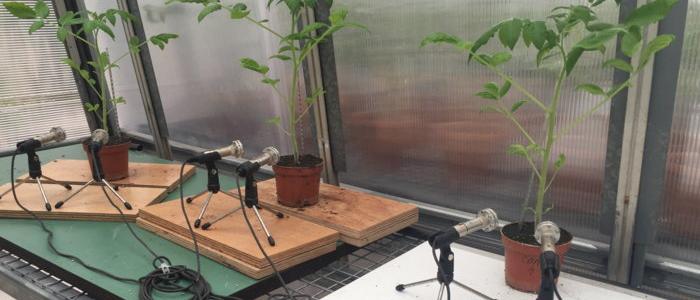Published: Less than 10 min ago
full screen
Next
The researchers eavesdropped on tomato plants using ultrasonic microphones, and compared the sounds of the plants to the sound of pressing bubble wrap.
1 of 2Photo: Itzhak Khait/University of Tel Aviv/TT
Plants do not suffer in silence – but make clicking sounds that we humans cannot perceive.
This is the opinion of researchers from Israel who recorded the sounds of plants that they cut into, or exposed to drought.
The question of whether plants can make sounds has long been scientifically debated, according to the Israeli researchers. They believe their new study provides evidence that a blooming meadow or flamboyant tomato farm is not as quiet as one might think.
“Our findings indicate that the world around us is full of plant sounds, and these sounds contain information about, for example, water shortages or damage,” says Professor Lilach Hadany at the University of Tel Aviv, in a press release.
“Apparently, an idyllic field of flowers can be quite a noisy place. It’s just that we can’t hear the sounds,” she continues.
Cuts in the stems
The researchers exposed tobacco and tomato plants to different treatments. Some were not watered for days and some were cut in the stem, while others were well taken care of.
The plants were tapped with special ultrasonic microphones, and the recordings were analyzed using AI algorithms that learned to distinguish between different plants and types of sounds.
It was found that healthy plants emitted a single sound per hour on average. But in plants that felt bad, it was about 35 sounds per hour.
The volume roughly corresponded to human talk, but the sound frequency was between 40 and 80 kilohertz, which the human ear cannot perceive.
Animals may hear
However, some animals – such as mice, butterflies and bats – can perceive sounds at these frequencies. And it is possible that both animals and plants have developed an ability to hear and respond to sounds, says Lilach Hadany:
“For example, a moth intending to lay eggs on a plant, or an animal intending to eat a plant, may use the sounds to guide its decision.”
However, whether living organisms can really react to the sounds of plants is unclear and is something the researchers are now investigating.
Like bubble wrap
So what do tormented plants sound like? A kind of popping or clicking sound is heard on recordings where the frequency has been turned down so that the human ear can perceive it.
In the long run, recordings of plant sounds could be used in agriculture to monitor whether, for example, they need more water, the researchers suggest. Although the new study focused on tomato and tobacco plants, they also recorded sounds from, among other things, wheat, corn and cacti.
The results are published in the scientific journal Cell.
Facts
This is how plants communicate
It has long been known that plants have the ability to “talk” to each other.
Communication can take place via chemicals secreted by the roots and read by the roots of nearby plants. Or it can take place above ground via airborne chemical signals.
Research also indicates that plants can react to sounds from the environment. For example, a study has shown that the sound of pollinators makes plants produce sweeter nectar.
How the sounds from the plants themselves arise is unclear. But the Israeli researchers believe they can come from a process where air bubbles form and burst in the plant’s vascular system.
Source: Swedish University of Agriculture, Tel Aviv University.
Read more
